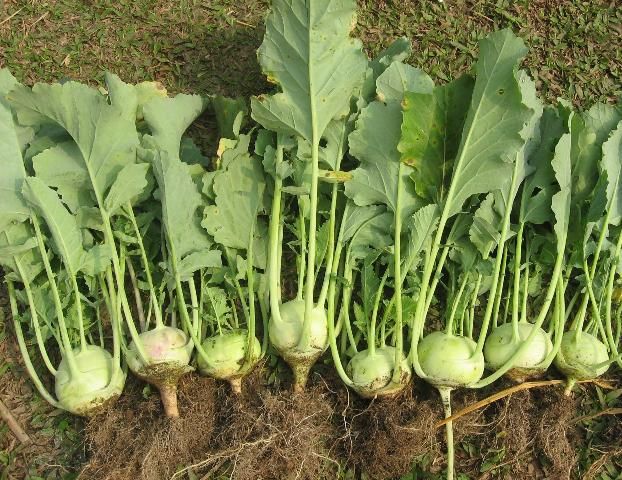Kohlrabi—Brassica oleracea L. (Gongylodes group)1
Kohlrabi is grown in gardens throughout the United States for the turnip-like enlargement of the stem just above ground level. Cabbage-like leaves on long stems arise from the top and sides of the round, root-like stem. The enlargement is tender and succulent, if rapidly grown and harvested, but becomes tough and fibrous with age.
Before kohlrabi is eaten, the peel is removed, and the interior is diced and boiled. The swollen stem also may be eaten raw, and leaves are edible.

Credit: Moushomi B. C., CC BY-SA 3.0
Propagation and time of planting are similar to cabbage, but plant spacing is about 4 inches. Kohlrabi matures in about 60 days when started from seeds, and 40 days started from transplants. While green varieties are most common, red varieties are popular in many gardens.


